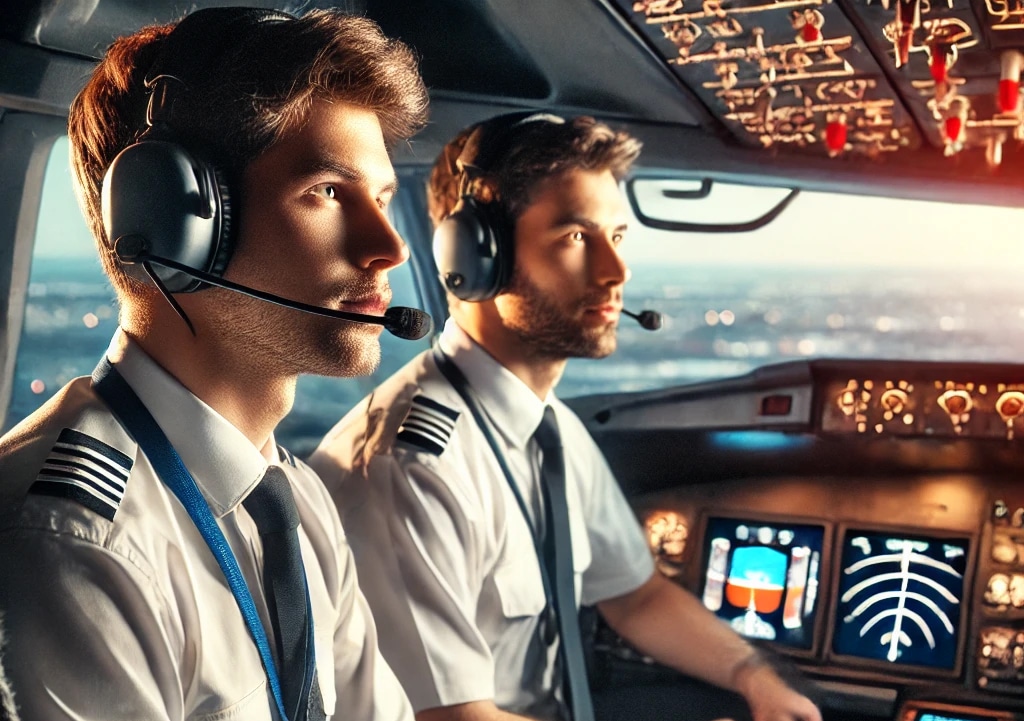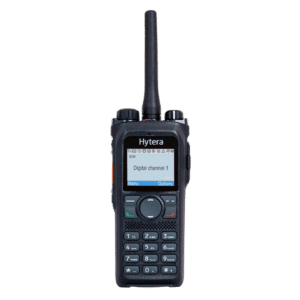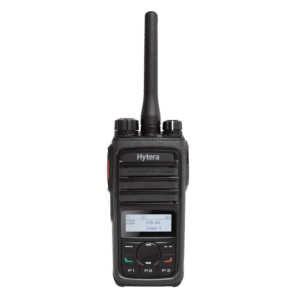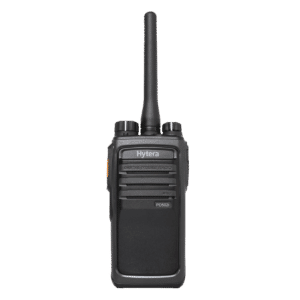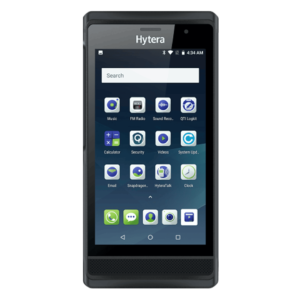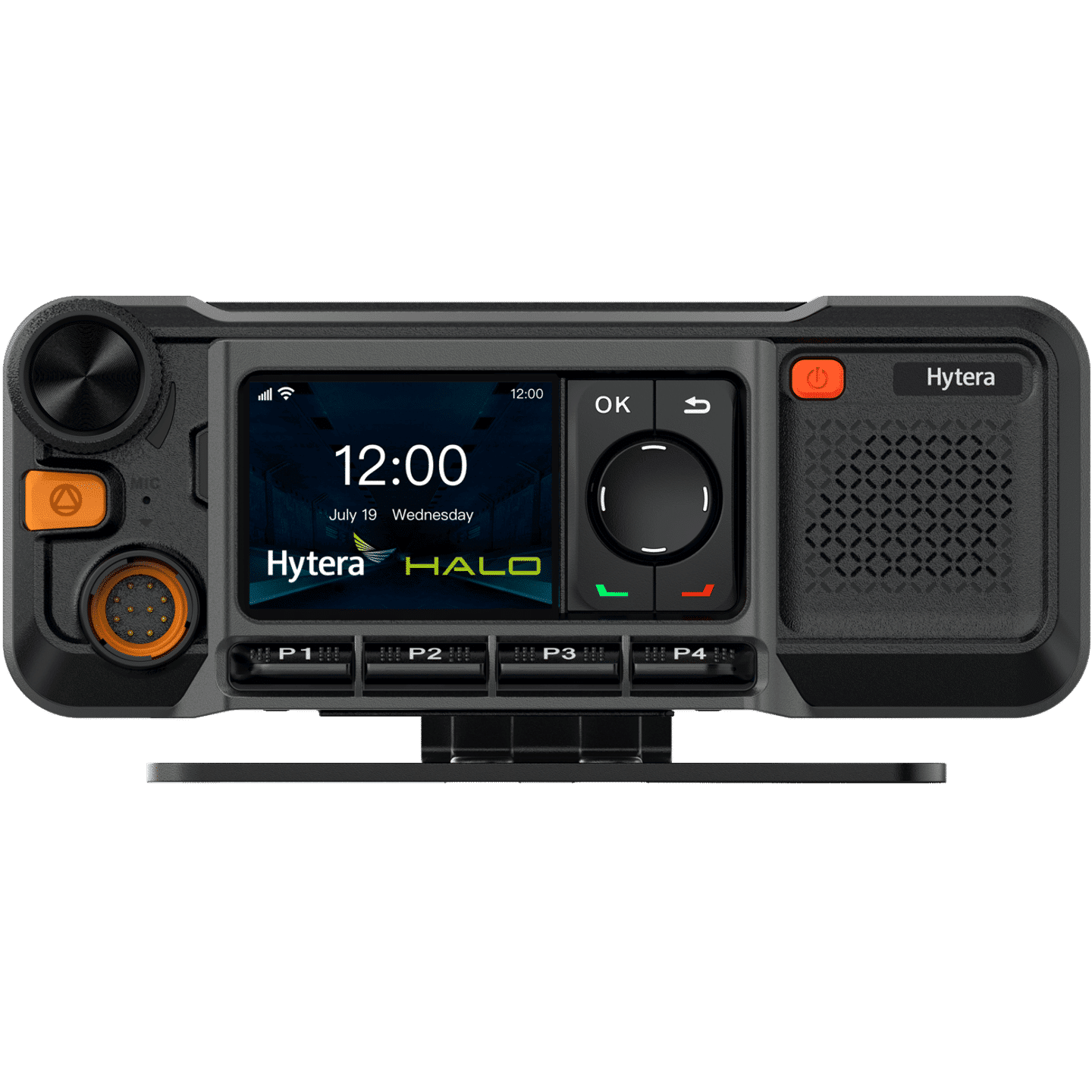Aviation headsets play an essential role in ensuring clear communication among pilots, crew members, air traffic controllers, and, at times, passengers. As safety is paramount in aviation, a high-quality headset enhances situational awareness by providing noise reduction, clear communication, and comfort. Pilots depend on headsets to focus amidst engine noise and long hours of operation. Whether wired or wireless, the quality of a headset can significantly impact communication, comfort, and overall flight experience.
In this article, we’ll explore the key features, technologies, and considerations for selecting the ideal aviation headset for your needs.
1. Key Features of a Great Aviation Headset
Modern aviation headsets have evolved to the points where they offer an extraordinary range of features.
1.1 Noise Reduction (Active vs. Passive)
Pilots need to filter out external noises like engine roars, rotor blades (in helicopters), and wind to stay alert. Noise reduction not only enhances communication but also reduces fatigue by minimizing noise exposure during long flights.
+ Active Noise Cancellation (ANC):
Active Noise Cancellation (ANC) is a major feature in aviation headsets. ANC technology utilizes built-in microphones to detect ambient noise, such as engine sounds and wind, and produces destructive interference sound waves to cancel it out. This is essential in loud cockpit environments where pilots need to hear instructions and communicate clearly without distraction. Prolonged exposure to loud cockpit noise can lead to hearing loss and fatigue, making noise reduction a critical feature for aviation headsets. High-end ANC systems can reduce cockpit noise by up to 30 decibels, which is advantageous in louder aircraft like turboprops or older jets. Some advanced ANC headsets even offer adaptive noise cancellation, which adjusts to the specific frequency profile of different aircraft, providing optimal noise reduction across various flight conditions.
+ Passive Noise Reduction (PNR):
While less technologically advanced than ANC, PNR still plays a needed role. PNR relies on the physical design of the headset to block out noise. Thick earcup padding, tight seals, and well-designed materials reduce ambient sounds effectively, though not as significantly as ANC. While ANC is preferred for high-noise environments, PNR offers a cost-effective and maintenance-free alternative. The best PNR headsets use a combination of high-density foam, advanced materials like memory foam or gel, and ergonomic designs to create an effective seal around the ear. Some manufacturers have even developed proprietary PNR technologies that rival the performance of entry-level ANC headsets.
1.2 Clear Communication and Microphone Quality
Clear communication is crucial in aviation, where misunderstandings or miscommunications can have serious consequences. A high-quality microphone ensures that pilots’ voices are transmitted clearly and accurately.
+ Noise-Cancelling Microphone:
A high-quality noise-cancelling microphone filters out background noise, enabling a pilot’s voice to be heard clearly by air traffic control and co-pilots. The ability to transmit clear communication in high-noise environments improves safety and coordination. Modern aviation headsets often feature electret microphones, known for their clarity and reliability. These microphones use sophisticated Digital Signal Processing (DSP) algorithms to filter out ambient noise and enhance voice clarity, ensuring that critical communications are conveyed effectively since only the pilot’s voice is transmitted. Some advanced models even incorporate multiple microphones to create a focused pickup pattern, further enhancing voice clarity.
+ Microphone Flexibility and Placement:
Adjustable boom microphones allow for precise positioning, ensuring that the pilot’s voice is captured accurately. Flexibility in positioning enhances comfort, and precise placement minimizes the risk of miscommunication during critical phases of flight.
+ Impedance and Audio Clarity:
Impedance matching between the headset and aircraft communication systems is critical for maintaining audio clarity. Proper impedance ensures that no signal loss occurs, preserving the sound quality needed for clear, unbroken communication. Most general aviation headsets are designed for 150–300 ohm impedance, matching typical aircraft intercom systems. However, some specialized headsets for military or commercial use may have different impedance ratings to match specific aircraft requirements.
1.3 Comfort and Fit for Extended Wear
Comfort is a major factor, especially during long-haul flights. Discomfort during extended headset wear can lead to fatigue, decreased focus, and reduced situational awareness, compromising pilot performance and safety.
+ Earcup Padding:
Earcups made of memory foam or gel padding provide a comfortable fit while sealing off external noise. Breathable materials help reduce sweat and heat buildup during extended use. Some high-end models now use 3D mapping technology to design earcups that conform to a wide range of ear shapes and sizes. Materials like sheepskin leather, which is both soft and breathable, are being used for earcup coverings to enhance comfort during extended wear.
+ Headset Weight and Distribution:
Lightweight headsets reduce strain on the neck and shoulders. Some manufacturers are experimenting with carbon fiber and other lightweight composites to reduce overall headset weight while maintaining durability. Weight distribution is another factor. A balanced design prevents discomfort during long flights, making it easier for pilots to remain focused and comfortable. Innovations like suspension headbands distribute weight more evenly across the head, reducing pressure points and fatigue during long flights.
+ Headband Adjustability:
A well-adjusted headband ensures a proper fit for various head sizes. This feature is conducive to comfort, as a poorly fitting headset can lead to fatigue and discomfort after extended wear.
2. Durability and Build Quality
Aviation headsets are subject to rigorous use and harsh environments, making durability an important factor in ensuring reliable performance and safety.
2.1 Materials Used
+ Rugged Construction:
Headset durability is another key factor, particularly in commercial aviation, where equipment is used continuously. Aviation headsets need to endure daily wear and tear. The use of durable materials like carbon fiber or reinforced plastic ensures longevity while keeping the headset lightweight. Such high-quality materials, when combined with robust construction, can help withstand the rigors of daily use, extreme temperatures, and exposure to moisture and dust.
+ Cord Strength and Flexibility (For Wired Headsets):
For wired headsets, sturdy cords resistant to tangling and damage are essential. Reinforced connectors and shielded cables reduce interference and prevent wear in high-movement areas. Some manufacturers are incorporating Kevlar-reinforced cables to prevent damage from constant flexing and movement in the cockpit.
+ Battery Life and Robustness (For Wireless Headsets):
Wireless headsets require long battery life, particularly for extended flights. High-quality batteries should be able to handle temperature variations and maintain performance in various flight conditions.
2.2 Environmental Resistance
+ Altitude Tolerance:
Aviation headsets need to withstand extreme conditions. Some models are tested in environmental chambers that simulate high-altitude conditions, including rapid pressure changes.
+ Temperature Tolerance:
Headsets used in aviation must be able to perform reliably in a wide range of temperatures, from the frigid conditions at high altitudes to the intense heat during ground operations. Some models are tested for operation when subjected to temperature fluctuations ranging from -15°C to +70°C.
+ Moisture and Dust Resistance:
Weatherproofing is essential for headsets that may encounter humid, dusty, or otherwise challenging environments. Moisture and dust-resistant materials help maintain the longevity of the headset even in variable conditions. Wireless models often feature ruggedized battery compartments with enhanced sealing to protect against moisture and dust ingress. Ingress Protection (IP) ratings are becoming more common in headset specifications, indicating resistance to dust and moisture.
3. Wired vs. Wireless Aviation Headsets
Ultimately, the choice between wired and wireless headsets depends on individual preferences, flight requirements, and personal comfort levels with technology.
3.1 Wired Aviation Headsets
+ Reliability:
Wired headsets are known for their consistent performance and reliability. They don’t depend on batteries, making them a safe choice for long flights. With no need to worry about battery life, pilots can focus on the flight without distractions.
+ Compatibility with Cockpit Systems:
Many wired headsets are compatible with older cockpit communication systems, making them ideal for aircraft with legacy avionics.
3.2 Wireless Aviation Headsets
+ Freedom of Movement:
Wireless headsets offer greater freedom of movement within the cockpit, which can be beneficial when pilots need to move without being tethered by cords. This can be especially useful in tight or modern cockpits.
+ Bluetooth and Connectivity Features:
Wireless models often come with Bluetooth connectivity, allowing pilots to pair their headsets with other devices such as phones or tablets for in-flight navigation or entertainment. The latest wireless aviation headsets use advanced Bluetooth 5.0 or even 5.2 protocols, offering improved range and stability compared to older models. Many feature “Multipoint” technology (also called “Dual-link”), which allows simultaneous connection to multiple devices. This enables pilots to connect to both the aircraft’s communication system and a mobile device for auxiliary audio input at the same time.”
+ Battery Life Concerns:
A potential downside to wireless headsets is the need for long battery life. Losing communication mid-flight due to battery failure could be disastrous, so choosing a model with reliable power management is essential. Thus, battery technology is a critical consideration for wireless headsets. Lithium-ion batteries are common, but some manufacturers are exploring more advanced options like lithium polymer batteries, which offer higher energy density and better performance in extreme temperatures.
4. Additional Features to Look For
4.1 Bluetooth Compatibility (For Wireless Models)
+ Bluetooth-enabled headsets allow pilots to access various devices for additional in-flight functions, such as audio navigation, music, or phone calls when on the ground. Bluetooth has become a well-known, indeed universal, wireless standard.
4.2 Stereo vs. Mono Sound
+ Stereo:
Stereo headsets provide enhanced audio quality, creating a more immersive listening experience, especially when engaging with additional audio feeds or listening to music.
+ Mono:
Mono sound ensures that essential communication is clear and undistorted, ideal for pilots who want to focus solely on crucial in-flight communications.
4.3 Spatial Audio
Going beyond simple mono or stereo, some modern aviation headsets incorporate “spatial audio” technology, which can enhance situational awareness by providing directional cues for radio communications or alerts. This can be particularly useful in busy airspace or during emergency situations, helping pilots better navigate complex airspace and respond to critical situations.
4.4 Volume Control and Audio Settings
+ Independent Volume Control:
Some headsets offer individual volume controls for each earcup, which is useful for managing sound levels in environments where one ear may pick up more noise than the other.
+ Automatic Volume Adjustment:
This feature automatically adjusts the headset’s volume based on external noise levels, ensuring that communication remains clear even in fluctuating cockpit environments.
4.5 Auto-on
Auto-on features are becoming more common, where the headset automatically powers on when it detects audio input from the aircraft’s intercom system. This helps conserve battery life and ensures the headset is always ready when needed.
5. FAA Certifications and Standards
5.1 TSO (Technical Standard Order) Certification
Ensuring the headset has TSO certification is expected for aviation use. This certification guarantees that the headset meets the FAA’s rigorous standards for quality and safety, making it reliable for use in aircraft. Failure to meet FAA certifications can result in compromised safety, reduced performance, and potential regulatory penalties.
To make sure an aviation headset complies with the TSO (Technical Standard Order) certification, the following main criteria must be met:
+ Design and Performance Standards:
The headset must meet the performance specifications outlined in the applicable TSO standards. For aviation headsets, the relevant TSO is typically TSO-C139, which sets specific requirements for audio performance, noise attenuation, and compatibility with aircraft communication systems. This includes:
– Clear communication quality: The headset must ensure no signal degradation when used in conjunction with aircraft communication systems.
– Audio frequency response: The headset must provide the necessary audio fidelity for clear communication over radio systems.
– Microphone sensitivity: The microphone must have a noise-cancelling feature that ensures clarity in high-noise environments such as cockpits.
+ Durability and Environmental Resistance:
Headsets must be able to withstand environmental factors typical in aviation operations. This includes:
– Temperature tolerance: The headset should function across a wide range of temperatures, both at high altitudes and in ground-based heat.
– Vibration and shock resistance: The headset should endure regular cockpit vibrations and potential physical shocks.
– Moisture and dust protection: The design should resist moisture from sweat or cockpit humidity, as well as dust or dirt ingress.
+ Electrical Compatibility:
The headset must be compatible with the aircraft’s electrical and communication systems, ensuring it integrates seamlessly without causing interference. This includes:
– Impedance matching: Proper impedance is necessary for clear audio signals and to prevent distortions when used with avionics.
– Electrical shielding: The wiring and components must be shielded from electromagnetic interference (EMI) to ensure reliable operation.
+ Noise Reduction Standards:
For noise attenuation, the headset must meet the noise reduction standards specified under the TSO guidelines. The headset should provide:
– Active Noise Reduction (ANR): ANR models must meet standards for noise-cancelling effectiveness in environments with high levels of cockpit noise.
– Passive Noise Reduction (PNR): For PNR models, the physical construction of the earcups must block out a specified level of ambient noise.
+ Comfort and Ergonomic Design
While not strictly performance-based, the TSO requires that headsets be designed for long-term use without causing discomfort. This includes considerations like:
– Weight: The headset must be lightweight enough for extended use without causing strain.
– Adjustability: The design should allow for adjustment to fit different head sizes and shapes comfortably.
+ Battery Life and Power Management (For Wireless Models):
For wireless aviation headsets, the TSO certification includes criteria for reliable power management:
– Battery life: The headset must have sufficient battery life to cover a long flight without interruption.
– Power resilience: The battery must function reliably in varied temperature and environmental conditions, with no significant loss in performance.
+ FAA Documentation and Testing:
To be TSO-certified, the manufacturer must:
– Submit the headset for rigorous testing by the FAA or an authorized certification body to ensure it meets the specific TSO-C139 criteria.
– Provide detailed technical documentation and test reports to the FAA, showing compliance with the TSO performance standards.
These criteria ensure that an aviation headset meets the highest standards of safety, durability, and performance in the aviation environment, providing pilots and crew with the reliable communication equipment necessary for safe flight operations.
5.2 ETSO (European Technical Standard Order)
Aside from FAA certifications, pilots operating globally should also consider headsets that meet international standards, such as the ETSO (European Technical Standard Order) certification, to ensure compliance and safety across different regulatory jurisdictions.
The TSO and the ETSO are similar certification processes for aviation equipment, including headsets, but there are notable differences between the two, particularly regarding regulatory bodies, standards applied, and regional considerations. Here’s a comparison of the key differences:
+ Regulatory Authorities Compared:
– TSO (Technical Standard Order): Overseen by the Federal Aviation Administration (FAA) in the United States. The FAA governs the TSO process, ensuring that aviation products, including headsets, meet the safety and performance requirements outlined in the U.S. aviation regulatory framework.
– ETSO (European Technical Standard Order): Regulated by the European Union Aviation Safety Agency (EASA) in Europe. ETSO certification ensures compliance with aviation safety standards across the EU member states and aligns with European regulatory policies.
+ Certification Standards and Reference Documents:
– TSO Certification: TSO certifications are based on U.S. standards and requirements. For headsets, the specific TSO-C139 sets performance criteria, such as noise reduction, electrical compatibility, and environmental durability, as established by the FAA. Each TSO is assigned a unique code, like TSO-C139 for headsets, that defines the specific requirements for that equipment.
– ETSO Certification: ETSO certification typically aligns with European standards but is often harmonized with global standards, including those from the FAA. While ETSO and TSO have many shared technical criteria, ETSO certifications may refer to different or additional European standards or documents. For instance, the relevant European specification may refer to EUROCAE standards (e.g., EUROCAE ED-14 for environmental testing), which may have slight variations compared to U.S.-based standards.
+ Scope and Application:
– TSO: TSO certification applies to aviation equipment in the United States and in many other countries that recognize FAA standards. For products sold primarily in the U.S. or to operators using U.S.-registered aircraft, TSO certification is required to ensure compliance with FAA regulations.
– ETSO: ETSO certification is specifically required for aviation products used in EU member states and countries that fall under EASA’s jurisdiction. It is mandatory for aviation equipment to meet ETSO standards if the product is intended for use in Europe or on EU-registered aircraft. In some cases, there may be additional European regulatory considerations beyond the scope of TSO standards.
+ Environmental Testing:
– TSO: Environmental testing under TSO regulations follows the RTCA DO-160 standard, which specifies how aviation equipment should perform under different conditions such as temperature, humidity, vibration, and electromagnetic interference (EMI). TSO equipment must meet the specific environmental tolerance levels outlined by the FAA.
– ETSO: ETSO also follows the RTCA DO-160 environmental testing standards, but in some cases, EUROCAE standards may apply, depending on the equipment category. This slight variation in reference standards might lead to subtle differences in how tests are conducted or interpreted in different regions.
+ Cross-Recognition:
– TSO: TSO certification is recognized by many global regulatory bodies outside the U.S., including in countries that follow FAA guidelines. However, ETSO certification may still be required for equipment used on aircraft registered in European countries.
– ETSO: ETSO certification is accepted in Europe and recognized by certain other aviation authorities. However, aircraft registered in the U.S. or countries adhering to FAA regulations may still require TSO certification, meaning a dual certification might be necessary for headsets to be sold and used globally.
+ Documentation and Approval Process:
– TSO: The FAA has a specific certification process for obtaining TSO approval. Manufacturers must submit test data, technical drawings, and performance reports demonstrating that the headset meets the FAA’s standards for communication and safety equipment.
– ETSO: EASA requires a similar process, but the documentation and approval procedures may differ slightly, especially regarding the acceptance of certain performance data and technical documentation. The Application for ETSO Authorization can involve additional checks to ensure compliance with European aviation safety laws and directives.
+ Regional Focus:
– TSO: TSO certification is primarily aimed at ensuring compliance within the U.S. aviation system, governed by FAA regulations. Products certified under TSO must meet the FAA’s standards for performance and safety.
– ETSO: ETSO certification focuses on European safety and operational standards. While many of the technical requirements overlap with TSO, the focus is on compliance with EASA regulations and European-specific needs, such as compatibility with European air traffic control systems or avionics requirements.
And so, while the technical requirements for TSO and ETSO certifications are largely harmonized, with both adhering to similar performance and safety standards, the regulatory environment and approval processes differ. TSO certification is governed by the FAA in the U.S., while ETSO certification is regulated by EASA in Europe. Both ensure that aviation headsets meet stringent performance, environmental, and safety criteria, but depending on the market, manufacturers may need to obtain both certifications to ensure global compliance.
5.3 Compatibility with Aircraft Systems
One must ensure that the headset is compatible with the aircraft type in which it will be operating. Different aircraft, such as general aviation, commercial, or military planes, may require different headset specifications for optimal communication. Also, when considering compatibility, it’s important to note that some modern glass cockpit aircraft use digital audio systems. Headsets designed for these systems may incorporate digital interfaces that offer enhanced features and integration with the aircraft’s avionics. As aircraft systems and regulatory requirements continue to evolve, it’s important to choose a headset that can adapt to these changes and ensure continued safety and reliability.
6. Airside Operations
Thus far we’ve been talking about in-flight operations, which pertain to activities that take place while the aircraft is in the air. This involves navigation, communication with air traffic control, and maintaining passenger safety and comfort. It includes the responsibilities of the flight crew—such as the pilot and co-pilot navigating the aircraft—and cabin crew ensuring passenger safety and providing services like food and assistance during the flight.
One mustn’t forget airside operations, which refers to all activities that occur on the ground at an airport, particularly within the restricted areas beyond security and customs. This includes runways, taxiways, aprons, and other areas where aircraft are maneuvered, serviced, or parked. Airside operations encompass tasks like aircraft fueling, maintenance, baggage handling, ground support coordination, and emergency response, involving personnel such as ground handlers, air traffic controllers, and maintenance staff. These operations are critical for ensuring the smooth arrival, departure, and turnaround of aircraft.
Companies like Hytera manufacture various communications devices that can be adapted for use in aviation, primarily in roles that support communication needs for airside operations rather than in-flight cockpit communication. Their offerings include mission-critical radios, such as the MT680 Plus Mission Critical TETRA Mobile Radio and PT560H Mission Critical TETRA Portable Radio, which are commonly used by public safety and emergency response teams due to their reliability, advanced noise-canceling features, and rugged construction.
- Hytera HM782 VHF 136–174, MHz 50 Watt 1024 Channel DMR Mobile Radio: This is Hytera’s new state-of-the-art device, providing an intuitive user interface, and gateway connectivity between radio and data networks. The HM782 can connect multiple radio sites, provide wireless data transmission, and support multiple simultaneous mode functions. It offers GPS and Bluetooth. The HM782 can be deployed Back-to-Back to enable communication between analog and digital radios, or radios with different frequencies. Multiple Hytera HM782 mobile radios can be connected to an Ethernet/IP network to provide a reliable and cost-effective method to connect remote radio sites and extend coverage areas. If a wired IP network is unavailable between two repeaters, two HM782 radios using different frequencies can provide a wireless link between the repeaters. The Clarity Transmission feature provides a wireless data path between remote network devices and a central network management station. Note: Cardinal Communications ( http://www.cardinalcomms.com ) carries the HM782 and other Hytera equipment.
- Hytera MT680 Plus Mission Critical TETRA Mobile Radio: This device offers high RF output power and features compliance with military and IP standards, making it suitable for use in tough environments. It provides secure communications with end-to-end encryption and features like a 10-Watt RF power transmitter, making it useful for ground operations at airports or supporting teams involved in emergency airside operations. This type of communication reliability and durability would be beneficial for ground crews and logistics in aviation contexts but is not typically used by pilots in-flight due to cockpit-specific communication requirements.
- Hytera PT560H and PT580H Plus Mission Critical TETRA Portable Radios: These portable radios are engineered for reliable use in harsh conditions. They come with noise-canceling technology and high audio output, suitable for use in environments like airports where external noise levels are significant. These radios are designed for use by ground personnel, emergency services, or other support functions that require secure and consistent communication. They have features like IP68-rated protection and high-powered designs, making them useful for workers who operate both indoors and outdoors, which can be essential for aircraft maintenance crews or airport security teams.
- Hytera EHW06 Wireless Earpiece: This earpiece offers hands-free communication, ideal for personnel who need to move around freely without being restricted by cables. The wireless design enhances mobility, which is particularly useful in airside environments where workers may need to navigate around aircraft and other ground equipment. The earpiece is designed for comfort, allowing extended use during long shifts in the noisy airport environment.
- EHN12-Ex Earset with on-MIC PTT (ATEX): This earpiece is specifically designed for use in hazardous environments, which might include certain areas of airport operations where exposure to fuel or other potentially flammable substances occurs. It features an on-MIC Push-To-Talk (PTT) function, allowing easy communication while keeping the user focused on their tasks. This makes it suitable for refueling or maintenance crews working close to aircraft fuel systems.
Hytera’s portable radios and their accessories, such as their noise-canceling headsets, are very effective for roles like airside ground communication and operational logistics where similar rugged and secure communication tools are needed.
Conclusion
A well-chosen headset can make all the difference in both comfort and safety during flight.
A great aviation headset combines advanced noise reduction, clear communication capabilities, comfort for long-term wear, and durable construction. Whether wired or wireless, it’s essential to choose a model that fits individual needs and meets FAA certifications to ensure safety and reliability. Pilots should explore their options, taking into consideration the specific demands of their cockpit environment.
Additionally, the field of aviation headsets continues to rapidly evolve, with manufacturers constantly pushing the boundaries of technology to enhance safety, comfort, and communication clarity for pilots. When choosing a headset, one must consider not just the immediate needs but also future compatibility with advancing aircraft systems and changing regulatory requirements. ■
Cardinal Communications is Ready to Help You
Cardinal Communications (http://cardinalcomms.com) wants you to explore our portfolio of high-quality headsets and other audio accessories to find the one that best suits your needs.


